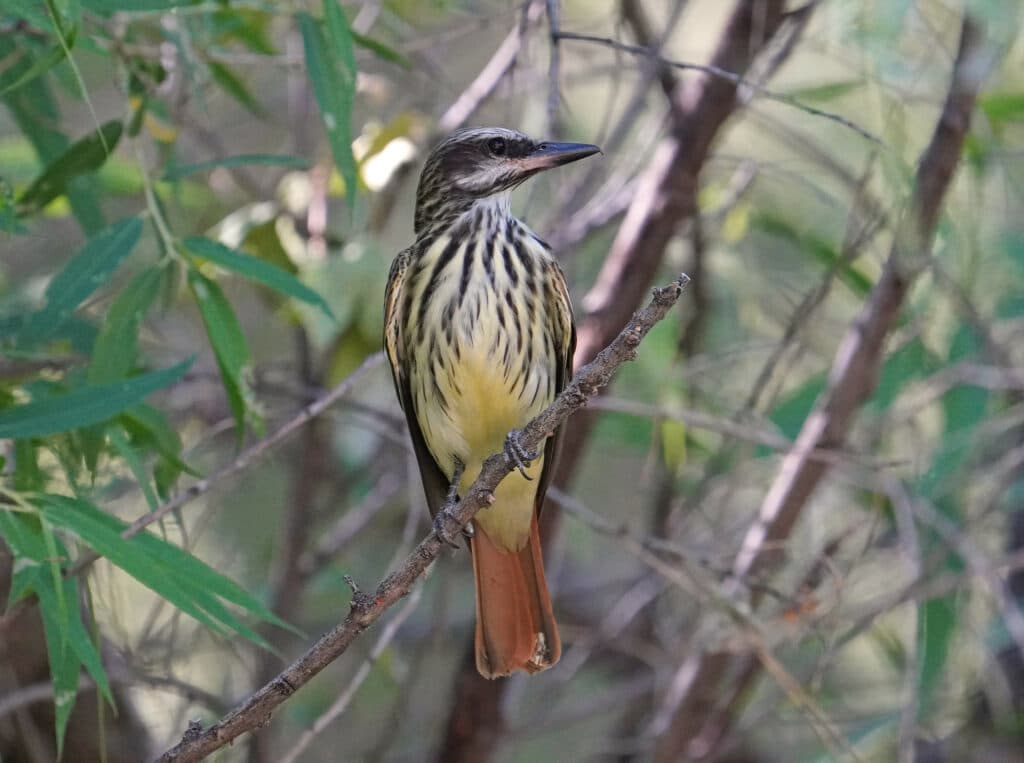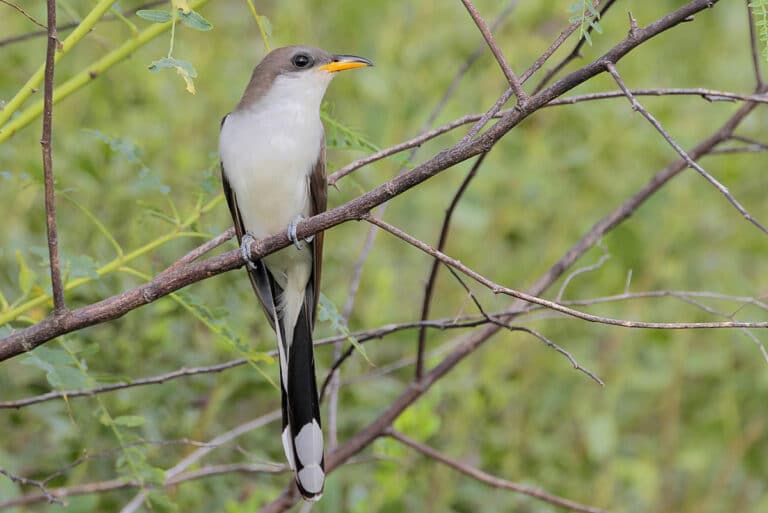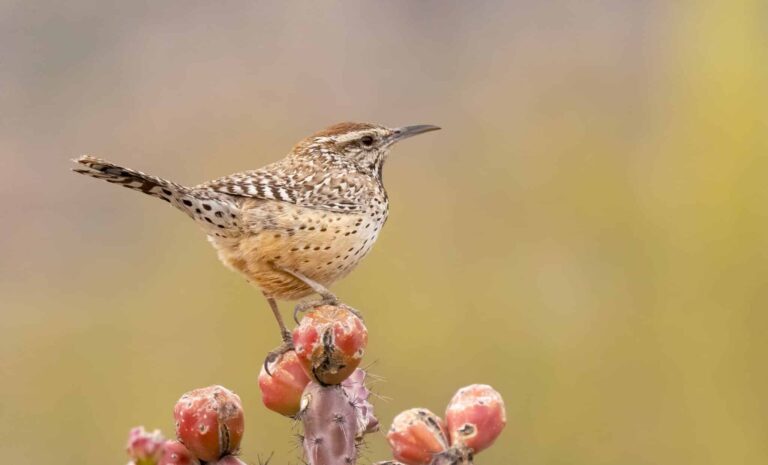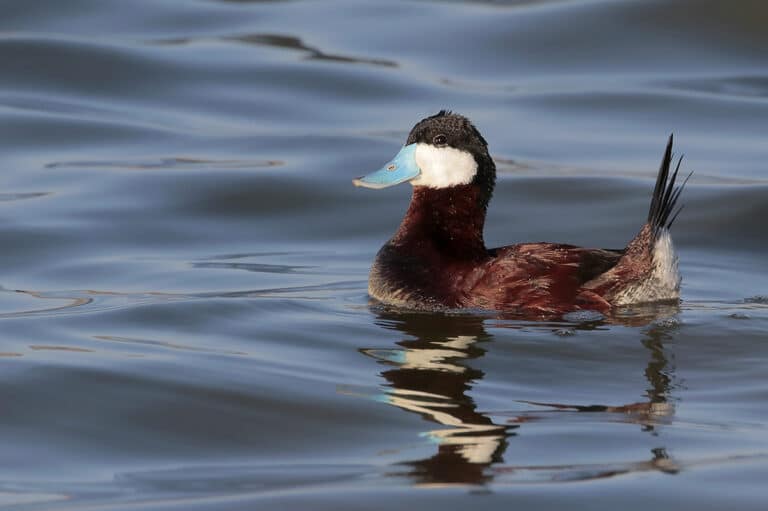If you travel to a lush sycamore-lined canyon in Southeast Arizona and close your eyes for a moment to take in the varied bird song, you can sometimes imagine yourself being far away in a tropical location. Even more so when Sulphur-bellied Flycatchers are around and singing in the tops of trees. It makes sense; this large tyrant flycatcher looks tropical, sounds tropical, and is closely related to Streaked, Variegated, and Piratic Flycatchers—all species that live in South and Central America. Sulphur-bellied, the most northern of these species, spends the winter down in Bolivia and breeds up into Mexico and barely enters the US right here in Southeast Arizona. It’s a boldly patterned, streaky bird with large white eyebrows and mustache, a bright rufous tail, and a yellow belly for which it’s named. The sounds of Sulphur-bellied Flycatchers will be your best clue to finding them as they can be difficult to see when silent. Famously described as sounding like a “squeaky toy” or “rubber ducky,” these jubilant weel-yum weel-yum and liquid tre-le-re-re, tre-le-re-re calls will have you quickly looking upwards.
Look for Sulphur-bellied Flycatchers in the canyons of the Santa Rita, Huachuca, or Chiricahua Mountains from late May to early September. They seem to prefer areas with walnut and especially mature sycamore trees containing the large cavities in which they nest. They are also one of the last species to breed in this habitat type, waiting to lay eggs until the summer rains begin in early July. So, get tropical this summer without having to leave Arizona!
Image by Hemant Kishan




